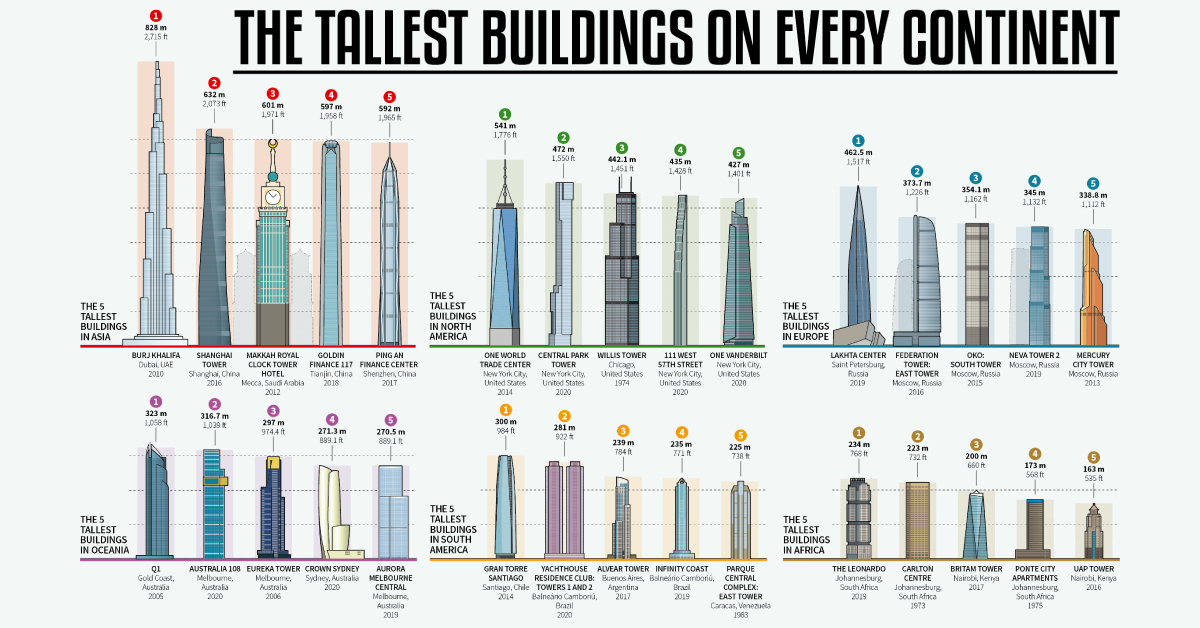Have you ever gazed up at a skyscraper and wondered just how many floors could possibly exist within its towering frame? The answer, especially for the tallest building in the world, is a number that often evokes both awe and disbelief. In the ever-evolving world of architecture, the pursuit of greater heights continues to fascinate and inspire. Today, we’ll delve into the captivating history, engineering marvels, and the surprising number of floors that define the tallest building on Earth.

Image: shikshanews.com
The quest for the world’s highest structure is a tale as old as civilization itself. From the ancient pyramids of Egypt to the colossal cathedrals of Europe, humans have long sought to create buildings that reach for the sky. But it was during the 20th century that this pursuit really took off with the advent of steel-frame construction and the advent of the skyscraper. Today, these towering giants dominate our cities, serving as symbols of progress and technological advancement.
A Race to the Top: The Evolving Landscape of Tallest Buildings
The race for the title of “tallest building” has been a fierce competition for decades, with various cities and countries vying for the coveted record. From Chicago’s Willis Tower (formerly Sears Tower) to New York City’s Empire State Building, each new record-breaking structure brought with it innovative engineering solutions and architectural brilliance. However, it was in the early 2000s that a new era in skyscraper design truly began, led by the emergence of the Burj Khalifa in Dubai.
The Burj Khalifa: A Modern Marvel
Standing proudly in the heart of Dubai, the Burj Khalifa stands as a testament to human ingenuity and ambition. Completed in 2010, this awe-inspiring skyscraper has held the title of “tallest building in the world” since its inception. But how many floors make up this iconic structure?
The answer is a staggering 163 floors. Each floor of the Burj Khalifa is meticulously designed, offering a unique blend of luxury living, commercial spaces, and breathtaking views. The building is home to a range of amenities, including restaurants, hotels, residential apartments, and even a public observation deck on the 124th and 125th floors. The Burj Khalifa is more than just a building; it’s a symbol of Dubai’s ambition, a global icon, and a testament to the boundless possibilities of engineering.
Beyond the Numbers: Understanding the Engineering Acumen
But the sheer number of floors in the Burj Khalifa is just one part of the story. Behind this towering structure lies a complex symphony of engineering feats. To achieve such colossal heights, architects and engineers had to overcome numerous challenges related to the weight of the structure, wind loads, and the extreme heat of the desert environment.
- Foundation: The foundation of the Burj Khalifa is a complex web of reinforced concrete piles extending deep into the ground to support the immense weight of the structure. It was crucial to choose a material that could withstand the intense pressure exerted by the building’s massive weight.
- Wind Load: Dubai is known for its strong winds, which presented a significant challenge for the design of the Burj Khalifa. Engineers employed a Y-shaped design for the building’s core structure, providing exceptional wind resistance. They also used strategically placed fins on the building’s facade to further mitigate wind loads.
- Heat Management: The desert climate in Dubai is characterized by its extreme heat. The Burj Khalifa incorporates various features to manage heat, such as strategically placed windows, high-performance insulation, and an advanced HVAC system.
- Sustainable Design: Beyond its impressive height, the Burj Khalifa is a pioneering example of sustainable design. The building incorporates features such as rainwater harvesting, energy-efficient lighting, and solar panels.

Image: viewfloor.co
The Future of Tall Buildings: New Frontiers in Design and Sustainability
The Burj Khalifa has set the bar incredibly high for tall buildings, inspiring future architects and engineers to push the boundaries of what’s possible. As the world grapples with environmental concerns and the need for sustainable solutions, the future of tall buildings is expected to see a greater emphasis on innovation and sustainability.
We are likely to see buildings incorporating renewable energy sources, innovative materials, and advanced building management systems to minimize their environmental impact. Concepts like vertical cities and sky-high urban farms exploring the potential of vertical living and the production of food in urban environments are gaining traction.
How Many Floors Is The Tallest Building In The World
https://youtube.com/watch?v=iYE7rovCGGk
Conclusion: The Legacy of Height and Innovation
The number of floors in the tallest building in the world, the magnificent Burj Khalifa, is a testament to human ingenuity and our unwavering desire to reach for heights that once seemed impossible. Each floor of this iconic structure represents a story of engineering brilliance, sustainable design, and a vision of progress. The future of tall buildings promises even more groundbreaking developments, pushing the boundaries of architectural possibility and shaping the skylines of our cities for generations to come. As we continue to explore new frontiers in design and sustainability, one thing is certain: the quest for greater heights will continue to inspire us all.





